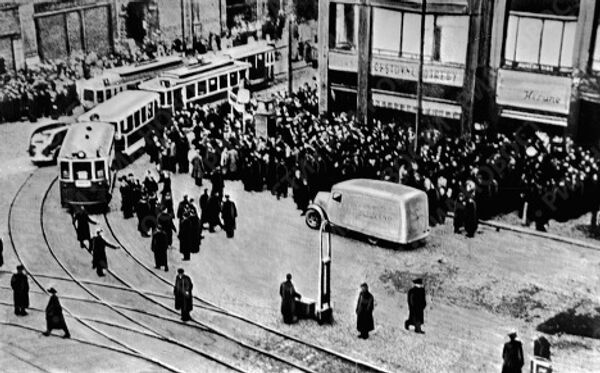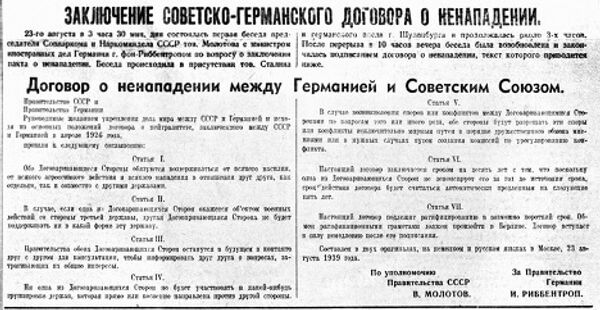
1/10
September 1, 2009. 70 years have passed since German troops invaded Poland, the start of WWII. To commemorate this date, RIA Novosti is publishing pictures taken in 1939, and shots from documentaries, related to those events. In the picture: September 1, 1939. German troops pass through Poland's territory, carrying a Polish border sign as a war trophy.

2/10
Concrete plans for employing Wehrmacht troops in the war against Poland were developed in Germany in April-June 1939. The German strategy was stated in orders dated July 15, 1939: "The destruction of the Polish armed forces is the goal of the operation. The leadership demands lightning strikes and raid success at the start of the war." In the picture: September 1, 1939. Warsaw streets, a shot from the Obiknovenny Fascism (Everyday Fascism) documentary, filmed by Mikhail Romm at Mosfilm studio in Moscow, released in 1965.

3/10
Wehrmacht soldiers shoot Poles in 1939.

4/10
October 28, 1939. An anti-fascist demonstration in Prague, former Czechoslovakia (now the Czech Republic).

5/10
October 31, 1939. Hitler's soldiers on Vaclav Square in Prague.

6/10
The Molotov-Ribbentrop Non-Aggression Pact, signed by the Soviet and German foreign ministers, Vyacheslav Molotov and Joachim von Ribbentrop, preceded the beginning of WWII. The Non-Aggression Pact was concluded in Moscow on August 23, 1939. In the picture: an article from the Argumenti I Facti newspaper, 32, 1989, Moscow.

7/10
The pact was signed by Soviet foreign minister Vyacheslav Molotov and his German counterpart Joachim von Ribbentrop. The document was attached with a secret additional protocol, which determined the spheres of influence of Germany and the U.S.S.R. in Eastern Europe "in the event of a territorial and political rearrangement". In the picture: German Fuhrer (President) Adolf Hitler (left) and German Foreign Minister Joachim von Ribbentrop (center), who returned from Moscow where he had signed the Soviet-German non-aggression treaty.

8/10
In accordance with the secret protocol of the Molotov-Ribbentrop Pact, found in the Soviet Communist party's archives in the middle of 1990s, German troops did not enter Poland's eastern regions, mostly populated by Belarusians and Ukrainians, in 1939, and did not invade Latvia, Lithuania and Estonia. These territories were later occupied by Soviet troops. In the picture: September 1, 1939. Red Army soldiers in Western Ukraine.

9/10
Soviet troops invaded Poland's eastern regions on September 17, 1939. In 1939-1940, with the help of Latvian, Lithuanian and Estonian opposition, Stalin’s Soviet Union took control of these countries. A part of Karelia's territory and the areas bordering with the city of Leningrad (now St. Petersburg) were annexed by the Soviet Union from Finland as a result of a Soviet-Finnish war conflict. In the picture: A Red Army soldier talking to inhabitants of the city of Wilno (Vilnius) in the days immediately after Lithuania was incorporated with the Soviet Union.

10/10
These events are declared by the Baltic states a prelude to the "annexation" of Latvia, Lithuania and Estonia. Baltic authorities try to represent ethnic Russians living in the countries as "invaders" and "colonizers". At the same time, the Polish, referring to the Molotov-Ribbentrop secret protocol, often blacken Soviet soldiers' reputation by equating the U.S.S.R., ruled by Joseph Stalin, and Hitler's Germany, when speaking about WWII. Russian historians argue that such an interpretation of the events of WWII is unacceptable from an ethical standpoint, as the 600,000 Soviet soldiers who died fighting to liberate Poland from the Nazis knew nothing about the Molotov-Ribbentrop Pact.

